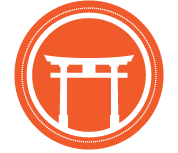Flexibility and Fitness in Aikido
Inryoku 6:3
By Josh Paul Sensei, AOSB Head Instructor
Flexiblity and Fitness Workshop
Sunday, April 7, 2024
10:00 am - 12:00 pm
$40
This is an in-person event.
Contact us to attend on-line.
Flexibility and fitness are sometimes overlooked aspects of a standard one-hour aikido class. There’s only so much that can be covered in an hour, so we tend to give preference to technique practice. After all, you can easily stretch in your living room, but you can’t always practice at home with your partner or roommate (especially if they don't train.) Aikido has homework, and part of the homework is cultivating flexibility and fitness beyond what’s achievable in class.
Of course, aikido is a unique full-body workout. However, as with any form of exercise, there’s an exercise plateau. Our bodies grow accustomed to the demands of a standard one-hour class, and the fitness benefits decrease. Variability is important to maintaining fitness, and aikido practice sometimes requires supplementation. This is especially true when trying to push yourself to a new level of practice or rank. Over the last 25 years, I’ve studied other martial arts, boxed, joined gyms, jogged, and practiced lots of yoga to maintain a fitness and flexibility level that enhances my aikido practice.
Stretching and cultivating flexibility is especially important. It helps to counteract the repetitive motions of training, and helps to prevent injuries. Flexibility enables us to move deeply into different postures, and to expand our ukemi. For example, “feather falls” require a good deal of mobility in the shoulder.
In Koichi Tohei Sensei’s Book of Ki: Coordinating Mind and Body in Daily Life, he describes a series of foundational stretches focused on the calves, hamstrings, and hips that he says will, “help you live a long and healthy life.” These stretches are also used in the Japanese yoga of Tempu Nakamura called shinshin toisu do. The series includes a seated forward fold, a straddle (seated wide-legged stretch), butterfly stretch, and folding backwards while in seiza (kind of a variation of yoga’s hero pose [virasana]).
When I started practicing, and for many years, I routinely performed this series of stretches at the beginning of class. At some point, either from age, repetitive motion, rheumatoid arthritis, or some combination thereof, I grew so stiff that this series started to lose meaning and benefit. It wasn’t until I did a yoga teacher training program, and started to understand the biomechanics of the postures, the differences between active and passive stretching, and introduced variety that my body started to regain flexibility. I’m still not particularly flexible, and I’m hardly an expert, but I do understand the stretches that I think are most relevant to my aikido practice.
Several years after being promoted to yondan (the last testing rank in the AWA), and running the dojo for several years, I felt at loose ends. With no tests on the horizon and the dojo stable, I didn’t have any tangible goals, and I wasn’t sure how to focus my practice. I asked my teacher Andrew Sato Sensei what to do. His first piece of advice was, “stay healthy.”
So, don’t rely solely on aikido class to stay flexible and fit. Aikido has homework. Go do it.
We’ll be hosting a workshop on flexibility and fitness in aikido on Sunday, April 7. It is currently planned as in-person event. However, if you’d like to participate online, let us know!




